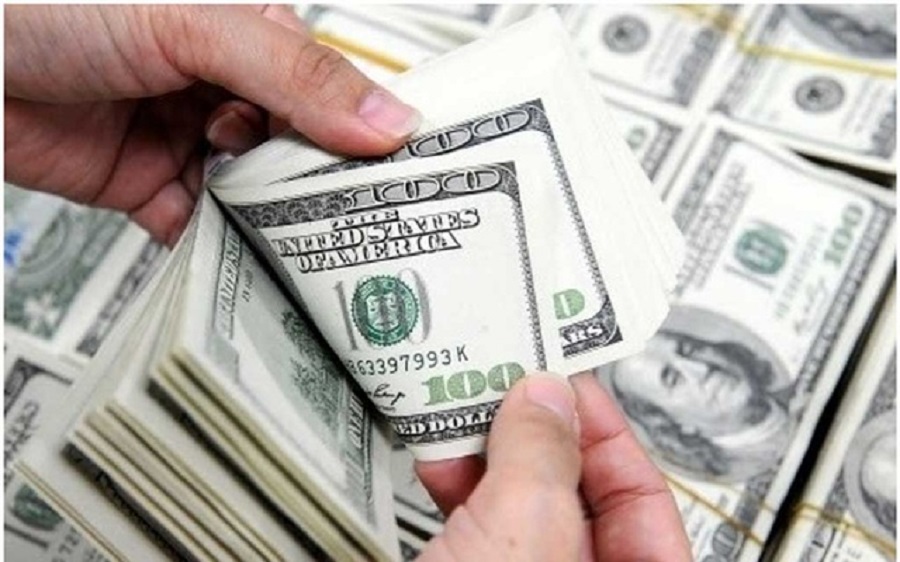
However, economists believe the economy is currently well-positioned to withstand any external shocks in the short term as they downplayed concerns of a crippling slump.
Nevertheless, they urged caution while stressing the need to use foreign funds prudently on profitable development projects in order to retain the faith of lenders. If a project cannot generate enough revenue to repay the loans for its implementation, it will spell trouble for Bangladesh, they warned.
Experts also called on the government to work towards keeping inflation in check to stave off any potential crisis.
POSITIVE VIEW OF DONORS
After the Awami League returned to power in 2008, the government heavily focused on infrastructure development using external credit.
But the Padma Bridge project marked somewhat of a shift in attitude as the Sheikh Hasina administration decided to build the structure with the country’s own fund after the World Bank refused to finance it, alleging corruption. The project is currently nearing completion.

A view of the Padma Bridge taken from the river on Monday, June 14, 2021. According to information from the Bridges Division, construction work on the bridge was 93 percent complete as of Jun 1. The government hopes to allow traffic across the bridge from next year if things proceed as planned. Photo: Mostafigur Rahman
Donors now have a more positive attitude towards Bangladesh and are always open to the government's calls for financial assistance, according to a finance ministry official.
In the past decade, Bangladesh has received an average of $4.66 billion annually compared to $1.56 billion a year in the previous decade, according to data released by the Economic Relations Division.
Zaid Bakht, chairman of Agrani Bank and former researcher at Bangladesh Institute of Development Studies, believes political and economic stability has put Bangladesh in a position of strength in the past decade, which in turn has helped attract donors.
“It’s natural for lenders to give loans where they see good [investment] prospects,” he said. “Even Japan has increased funding for Bangladesh. They [Japan] think financing Bangladesh’s infrastructure development will create investment opportunities for them.”
Bangladesh’s strong macro-economic base, loan management and debt repayment capability have led the World Bank to continue lending vigorously to the South Asian country, an official of the Washington-based global lender has said.

Bangladesh has so far received more than $35 billion from the World Bank’s International Development Association (IDA) under a programme with the lowest interest rates – the highest amount given to a single country.
Mehrin Ahmed Mahbub, senior external affairs officer at the World Bank, said Bangladesh “performed well” in its development work with the credit line provided by the IDA. “Bangladesh has never defaulted despite taking huge loans from the World Bank fund,” she pointed out.
Mehrin said poverty reduction is the main goal of Bangladesh’s development and underscored the significant progress made by the country in the past decade. She also commended the pace of Bangladesh’s economic recovery from the pandemic slump.
“Even poverty has been alleviated slightly instead of rising in 2020 and 2021. These factors point to the strength of Bangladesh’s economy,” said the World Bank official.
Mehrin believes World Bank’s help is one of the key factors behind Bangladesh’s economic strength, with the global lender’s credit support for the country increased by 500 percent in the past three decades from $800 million annually in the 1990s to $1.8 billion a year in the 2010s.
“Bangladesh has done well in terms of development. But the government must be careful about keeping inflation in check,” she said.
LESSONS FROM SRI LANKA’S CRISIS?
Asked if the World Bank is extending similar support to Sri Lanka, Mehrin drew a contrast between the economic condition of the two countries. Sri Lanka does not get low-interest loans because it is a developing nation while Bangladesh has just become eligible to graduate to a developing country.
Sri Lanka’s external debt accounted for 60.9 percent of the country's nominal GDP in 2020, compared with the ratio of 66.4 percent in 2019.

The country’s central bank said on Tuesday it had become "challenging and impossible" to repay external debt, as it tries to use its dwindling foreign exchange reserves to import essentials like fuel.
The island nation's reserves have slumped more than two-thirds in the past two years, as tax cuts and the COVID-19 pandemic badly hurt its tourism-dependent economy and exposed the government's debt-fuelled spending.
Street protests against shortages of fuel, power, food and medicine have gone on for more than a month.
On the other hand, Bangladesh's debt stood at $55.44 billion in February 2021, which was 13.32 percent of the country’s GDP.
Ahsan H Mansur, executive director of Policy Research Institute, does not think it is right to compare Bangladesh’s external debt with its GDP output because “our GDP does not work like that of other countries.”
Neighbouring India, for example, generates about 20 percent of its GDP from revenues every fiscal year, while Pakistan earns about 18 percent. “Even African countries generate revenue amounting to about 20 percent of their GDP on average. However, Bangladesh’s revenue is less than 10 percent of its GDP,” Mansur said, explaining why the GDP-to-debt ratio is not significant to the analysis in the current context.
Asked if the mounting debt and the trend of taking more loans could put the country in a hole like Sri Lanka, Dr Zahid Hussain, former lead economist at World Bank’s Dhaka office, said Bangladesh’s external debt isn't near the red line at present.

Nov 10, 2021: The dream of the people of southern Bangladesh came a step closer to reality with the initiation of casting pitch of the Padma Bridge. The 100mm-thick pitch being cast in two layers - 60mm for the first layer and 40mm for the second.
Citing a 2010 study by the International Monetary Fund, he said an external debt-to-GDP ratio of 90 percent is tolerable for a developed nation while the limit is 65 percent for a developing nation. Currently, Sri Lanka’s loan-to-GDP ratio is around 110 percent.
Although Bangladesh’s debt-to-GDP ratio is in a far better state, Zahid raised concerns about a few recently-initiated mega projects.
Lenders allocate funds for disbursement by taking into account the prospects of debt realisation from a particular project based on its feasibility in terms of increasing national income, he said.
If a project cannot generate the revenue required to repay the loan, the debt puts a strain on the national economy, according to him. The effect will multiply if a series of projects fail to yield adequate revenues to repay the loans.
“For example,” he said, “no returns have come from Rooppur Nuclear Power Plant project yet but Bangladesh has already started the first phase of repayment. The second-phase instalments will need to be paid from the next fiscal year.”
“Therefore, the project will become a headache for the national economy if it cannot be completed on time.”
The total cost of the Russia-backed project is estimated at Tk 1.13 trillion. Russia is lending Bangladesh Tk 910.4 billion for the project.

A metro rail train runs along the line at Dhaka’s Shewrapara as part of a test trip on Sunday, Dec 12, 2021. Photo: Asif Mahmud Ove
Zahid said Sri Lanka, once considered the strongest economy in South Asia, implemented mega projects to serve political and personal interests. Now, the country is in trouble because the projects are not generating the expected revenue.
“They [Sri Lanka] spent billions of dollars on the Hambantota deep seaport and a nearby airport, but the project was not really necessary. Therefore, the country could not generate revenue from it."
“Moreover, huge funds from the projects were allegedly laundered abroad,” he said.
BANGLADESH NEEDS MORE
Prime Minister Sheikh Hasina shrugged off concerns over Bangladesh’s economy suffering the same fate as Sri Lanka's due to mounting external loans. She said her government takes every bit of caution before accepting any foreign investment, not just loans.
“We always keep accounts of the expenses related to development projects. We calculate how much we can gain from the development by using the loans and how much it will benefit the people,” she said in a meeting on Monday.
“Every single plan is detailed, [taking into account] how many people will have access to it and how much it will contribute to our economy. We keep all these factors in mind.”

Days earlier, she told parliament that her government was saving money by completing development projects quickly.
Economist Mansur believes the country needs more funds, even if it is in the form of loans, to achieve its economic goals in light of the government's plans to transform Bangladesh into a developed nation by 2041.
Mansur, a former IMF official, said Bangladesh will have to establish a strong footing in the global economy after its full ascent to the developing nation category in 2026. “So, we have to develop infrastructure extensively. As such, we will need huge loans.”
“We still have a lot of mega projects on-going. We need to create an investment-friendly environment by implementing many more big infrastructure projects in the coming years.”
“Yet again, it is necessary to take maximum advantage of foreign loans with caution,” he said, stressing the need to move the country forward by enhancing its economic capacity through proper utilisation of foreign loans.




